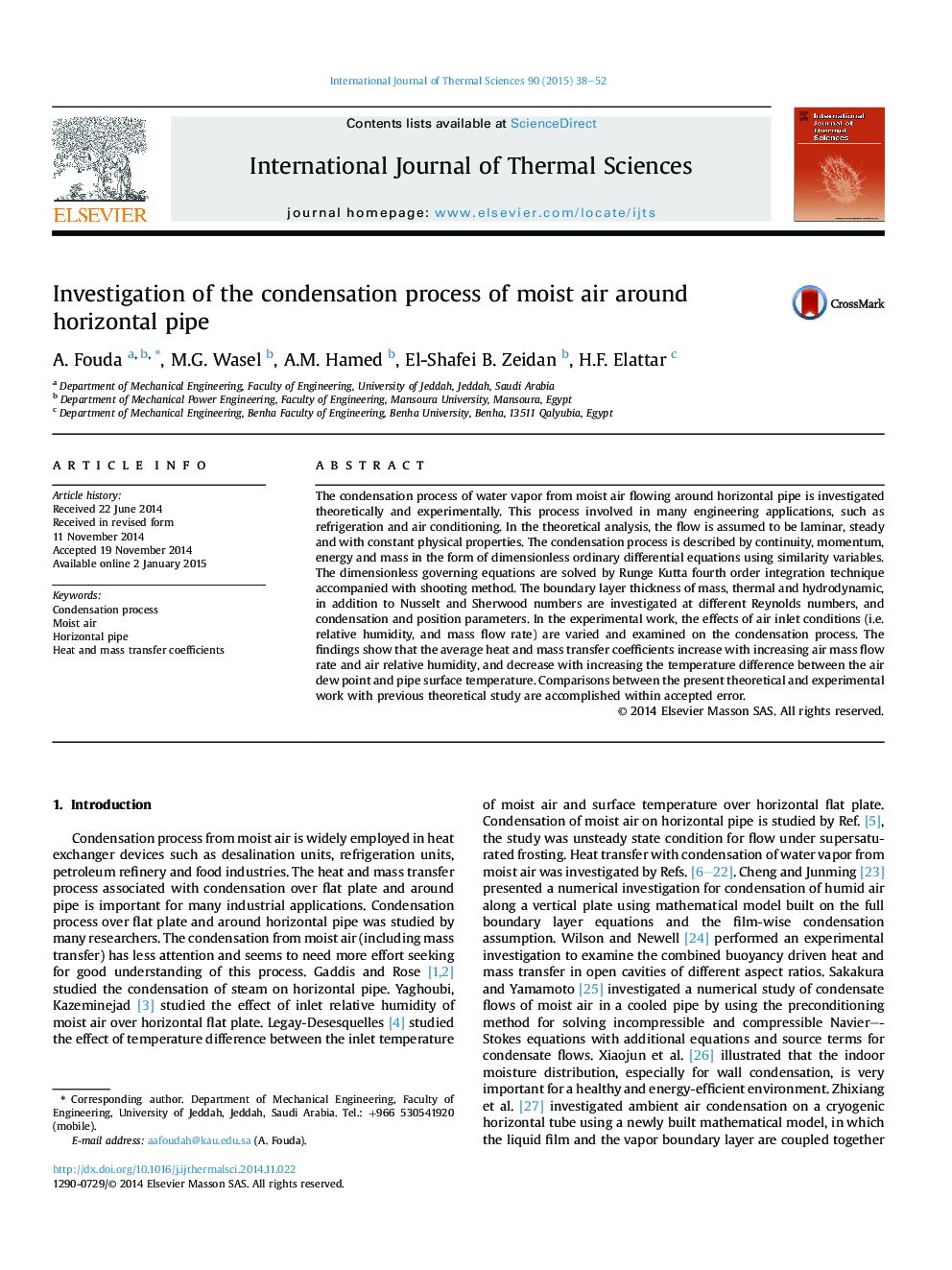| Article ID | Journal | Published Year | Pages | File Type |
|---|---|---|---|---|
| 668106 | International Journal of Thermal Sciences | 2015 | 15 Pages |
•Theoretical and experimental investigation for condensation process of moist air around horizontal pipe is studied.•The influences of air inlet conditions on the heat and mass transfer coefficients are examined.•Theoretical and experimental comparisons study is conducted and good agreement trends are obtained.•Theoretical and experimental correlations for Nu and Sh are developed and presented.
The condensation process of water vapor from moist air flowing around horizontal pipe is investigated theoretically and experimentally. This process involved in many engineering applications, such as refrigeration and air conditioning. In the theoretical analysis, the flow is assumed to be laminar, steady and with constant physical properties. The condensation process is described by continuity, momentum, energy and mass in the form of dimensionless ordinary differential equations using similarity variables. The dimensionless governing equations are solved by Runge Kutta fourth order integration technique accompanied with shooting method. The boundary layer thickness of mass, thermal and hydrodynamic, in addition to Nusselt and Sherwood numbers are investigated at different Reynolds numbers, and condensation and position parameters. In the experimental work, the effects of air inlet conditions (i.e. relative humidity, and mass flow rate) are varied and examined on the condensation process. The findings show that the average heat and mass transfer coefficients increase with increasing air mass flow rate and air relative humidity, and decrease with increasing the temperature difference between the air dew point and pipe surface temperature. Comparisons between the present theoretical and experimental work with previous theoretical study are accomplished within accepted error.
